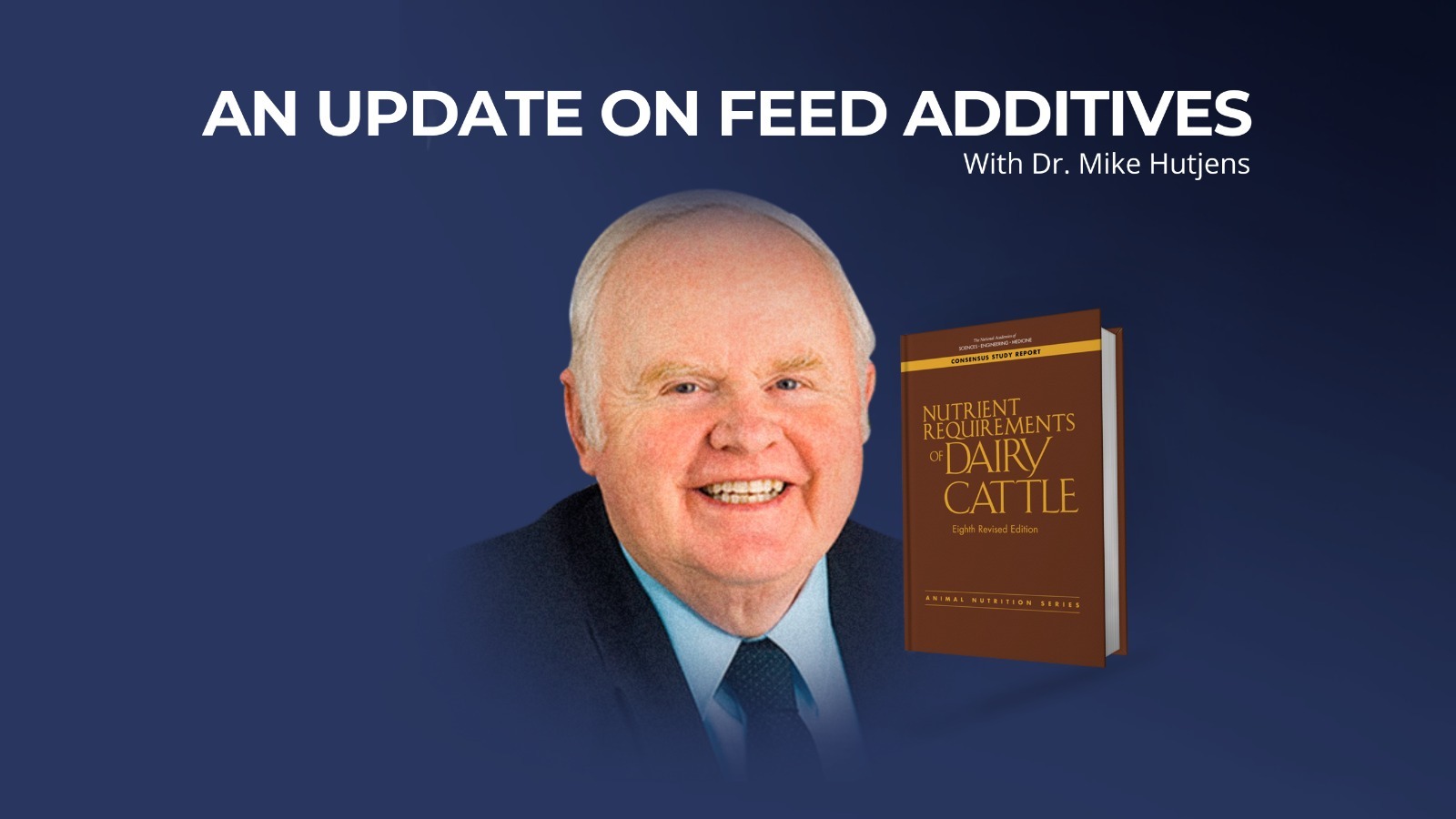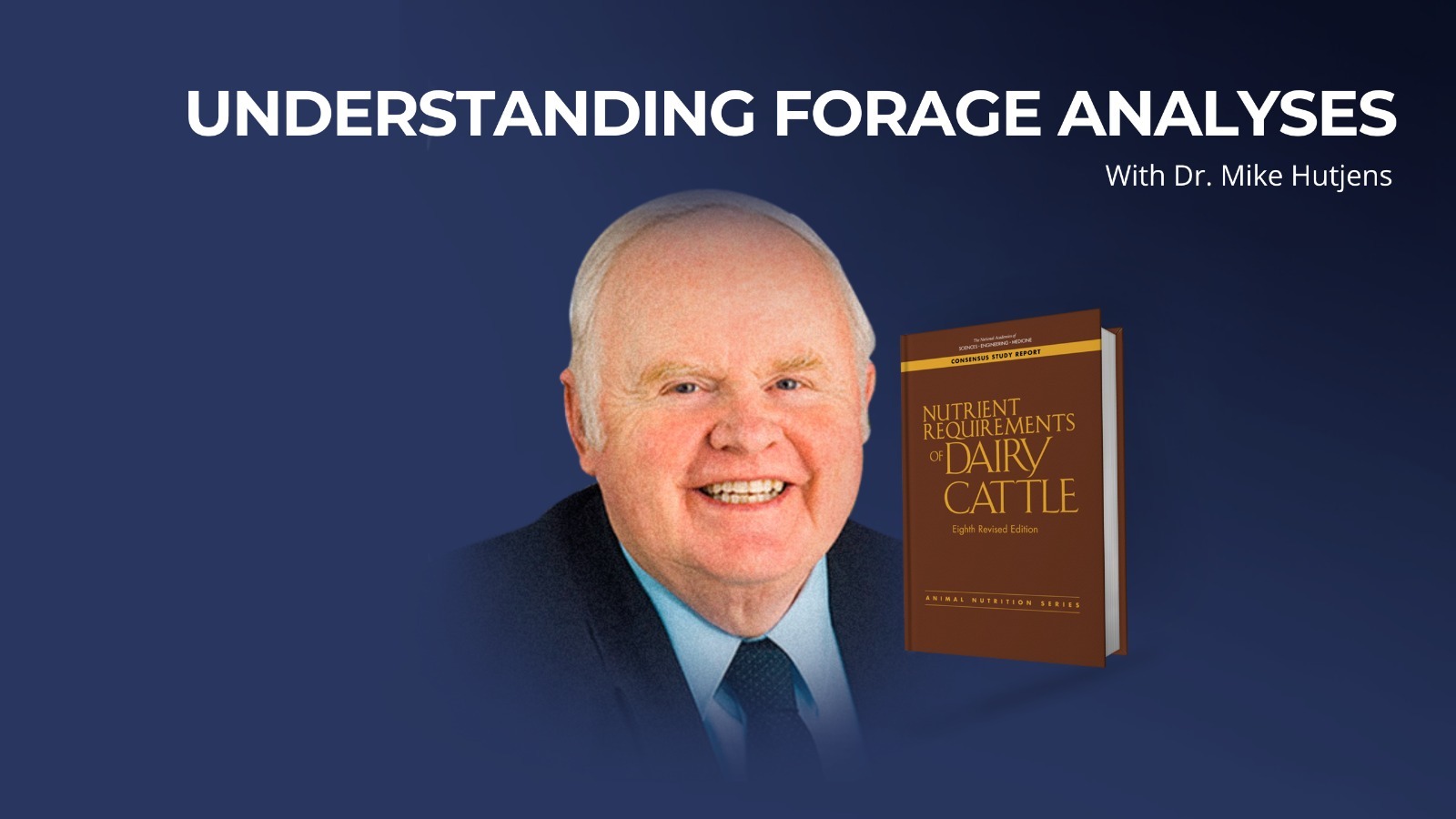Digital certificate
12 months of access
Recorded classes
What will you learn in the classes?
- Update on Feed Additives:
- Importance of additives in animal nutrition, focusing on non-nutritional ingredients added in small quantities to diets.
- Adoption of new additives such as those that reduce methane emissions, and the use of zeolites, acidifiers (DCAD), and active vitamin D.
- Additives and Their Functions:
- Different types of additives discussed, such as ionophores, yeasts, inoculants, enzymes, essential oils, and phytonutrients.
- Specific functions of additives, including energy balance, reproductive health, hoof health, and immunity.
- Methane Mitigation:
- Exploration of additives such as 3-NOP, essential oils, and marine algae for methane reduction in herds, with analysis of their effectiveness and impact on milk production.
- Comparison between different approaches and their respective efficiencies in reducing methane emissions.
- Recommended Additives List:
- Dr. Mike Hutjens’ recommendations for the use of additives in lactating, dry, and newly calved cows, highlighting the importance of specific products such as buffers, yeast cultures, monensin, and calcium supplements.
- Prioritization of additives based on scientific evidence and economic impact, considering the cost-benefit ratio.
- Milk Composition and Herd Growth:
- Importance of breed in milk composition, requirements during gestation, and growth.
- Body weight of the herd, with attention to the average of the group and the percentage of first-calf heifers.
- Gestation and Lactation:
- Days of pregnancy and their effects, differentiating between dry and lactating cows.
- Growth rate, especially for first lactation and heifers.
- Replenishment of Body Reserves:
- Methods to calculate the replenishment of body reserves, considering energy balance.
- Milk Production and Composition:
- How to use the herd or group average to evaluate and formulate milk production and composition.
- Feed Composition and Diet Formulation:
- Edit and input feed composition data.
- Steps for diet formulation and evaluation, including animal data entry, dry matter intake (DMI) assessment, and necessary adjustments for energy, protein, and mineral balances.
- Understanding the results of bromatological analyses of forages.
- Forage Analysis Indicators:
- Analysis of important indicators such as dry matter, crude protein (CP), neutral detergent fiber digestibility (NDFd), among others.
- NDF Digestibility (NDFd):
- Importance of fiber digestibility and NDF analysis using in vitro methods.
- Neutral Detergent Fiber (aNDF):
- Analysis protocol using amylase and correction for starch and ash contamination.
- In vitro Digestibility:
- Methods to determine the digestibility of forage components over time, such as 30, 120, and 240 hours.
- Ash Content in Forages:
- Assessment of ash content and its implication on forage quality.
- Relative Forage Value (RFV) and Relative Forage Quality (RFQ):
- Calculation and application of these values in assessing forage quality.
- Forage Analysis Methods:
- Comparison between analysis methods such as wet chemistry and near-infrared spectroscopy (NIRS).
- Feed Editing in NASEM:
- Procedures for entering and editing feed data in the NASEM model, using carbohydrate and nitrogen fractions.
Who will teach me?

Bill Weiss
The Ohio State University.
Winner of the American Feed Industry Award, a recognition of the leading authorities in the field.
Weiss’s research program has changed the way dairy cows are fed in the United States and around the world. His research has improved diet formulation by developing equations to estimate dietary energy.
He has also improved animal health by enhancing supplementation strategies for nutrients.

Mike Hutjens
University of Illinois
Dr. Mike was born in Green Bay, Wisconsin, where he was raised on a dairy farm. In 1971, he received his PhD from the prestigious University of Wisconsin-Madison.
He has been named Extensionist of the Year, Outstanding Professor in the U.S., one of the most influential people in the American dairy industry, and is a member of the ADSA Hall of Fame.
Santafé Agroinstituto © 2020 All rights reserved


